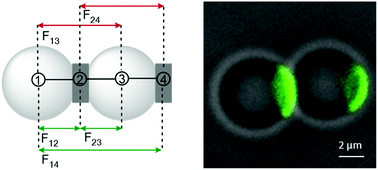Mono-patchy zwitterionic microcolloids as building blocks for pH-controlled self-assembly
Abstract
A directional molecular interaction between microcolloids can be achieved through pre-defined sites on their surface, “patches”, which might make them follow each other in a controlled way and assemble into target structures of more complexity. In this article, we report the successful generation and characterization of mono-patchy melamine–formaldehyde microparticles with oppositely charged patches made of poly(methyl vinyl ether-alt-maleic acid) or polyethyleneimine via microcontact printing. The study of their self-aggregation behavior in solution shows that by change of pH, particle dimers are formed via attractive electrostatic force between the patchy and non-patchy surface of the particles, which reaches its optimum at a specific pH.



 Please wait while we load your content...
Please wait while we load your content...